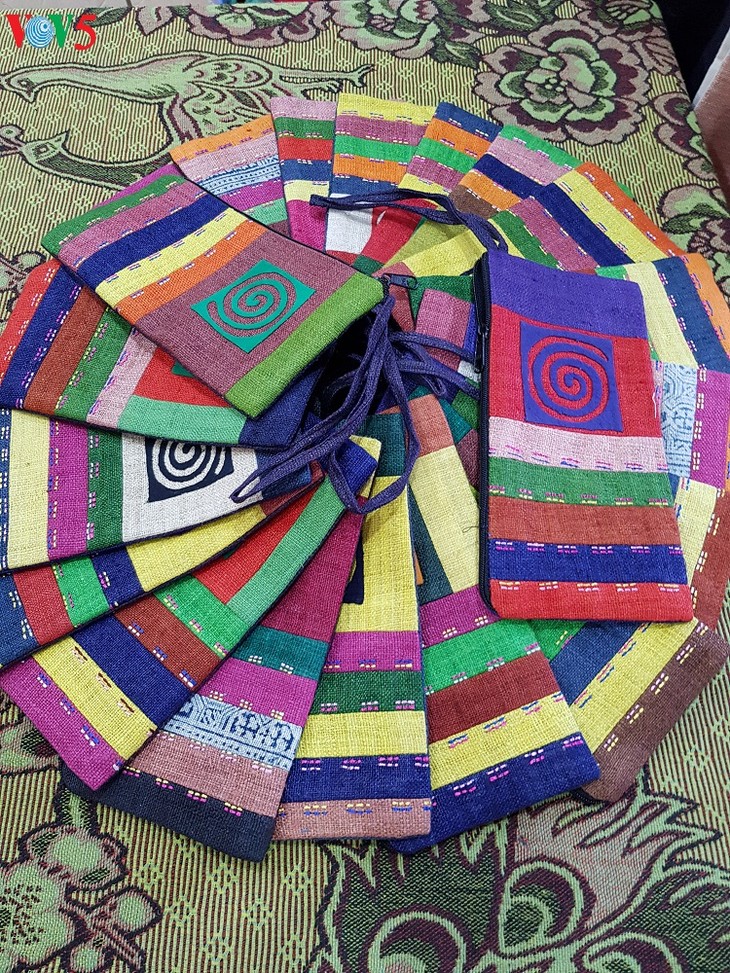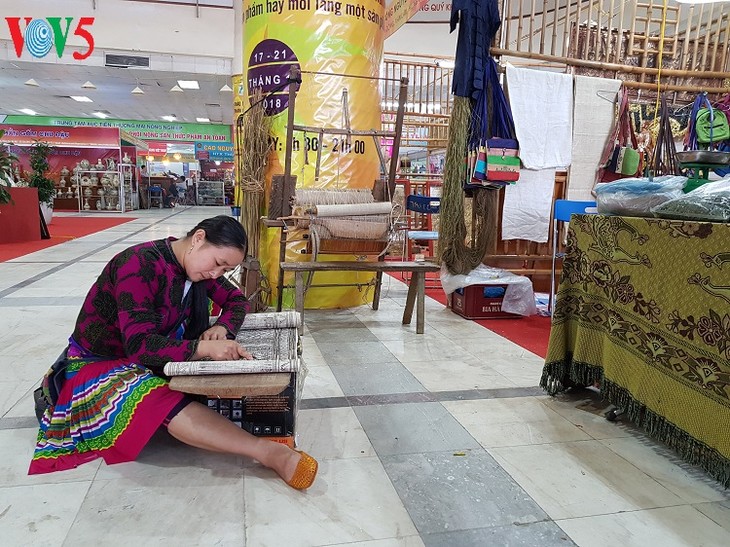(VOVWORLD) - Can Ty village in Quan Ba district, Ha Giang province, is famous for flax growing and weaving. Villagers don’t know exactly when the craft emerged but at present local women with deft hands make brocade dresses and many other products to serve the needs of locals and tourists who want purchase a souvenir.

Brocade products of Can Ty village.
|
Can Ty village is a small village with only about 270 households. All villagers are Mong ethnic people who mainly live on farming on mountain fields and growing corn, potato, and cassava. At leisure time after harvest, most of them weave brocade. The principle raw material is locally grown flax fibers. Flaxes are planted on the field by strewing them. After being harvested, they are dried and split to yarn for weaving. Linen cloth is manually woven.
Traditionally, Mong girls must know sewing before getting married to make their own wedding dresses. When they are still small, Mong girls have been taught to do embroidery, needlework, and weaving. Thus a majority of them excels in weaving and can pass down the craft to the next generation.

Cu Thi My demonstrates brocade weaving at the Vietnam Craft Village Trade Fair 2018 in Hanoi.
|
Cu Thi My, a local craft-woman, says: “Years ago, the craft was handed down to the descendants in a hope that the cultural characteristics of the people will not fade away. When the children get married, two sets of clothes must be prepared to give to them. When a Mong person dies, they must have three sets of clothes to wear so that they can meet their ancestors. It’s necessary to plough the soil thoroughly to plant flaxes. After harvesting, the trees should be dried carefully and are not exposed to the rain. To have the product soft and beautiful, it’s necessary to make fibers small and even.”
The village authorities have focused on vocational training, creating jobs and developing the local economy. In 2011, the Can Ty Linen Weaving Cooperative was established.
Sung Thi Mỵ, a villager, said: “Twelve households have joined the cooperative and engaged in the craft for a long time. The cooperative has provided training for women and girls. The craft requires a skilled hand. Our products include skirts, dresses, bags, blankets, and towels with diverse patterns.”
It requires a Can Ty weaver to coordinate rhythmically the hands to drive the shuttle, the foot to pedal the treadles to let out heddles, and the back to stretch the fabric. Each patterned brocade cloth is not only a souvenir of a traditional craft village in Ha Giang, but also demonstrates the cultural characteristics of the Mong ethnic people.
Cu Thi My, a Can Ty craft-woman, said: “The most typical feature of the product is the pattern painted with beeswax. From 2004 on, the craft village has prospered. At the beginning we only weaved for ourselves and later on for tourists who want to buy cloth as souvenirs. I usually deliver products to shops around the Temple of Literature in Hanoi, which sponsors our craft by purchasing all our products.”
With Quan Ba district’s tourism potential, the Mong ethnic people in Can Ty village have more opportunities to develop the brocade weaving and expand the market towards building a brand and increasing the locals’ income. This contributes to the preservation and promotion of local ethnic culture.